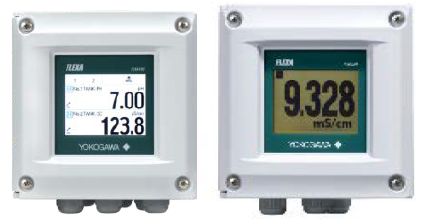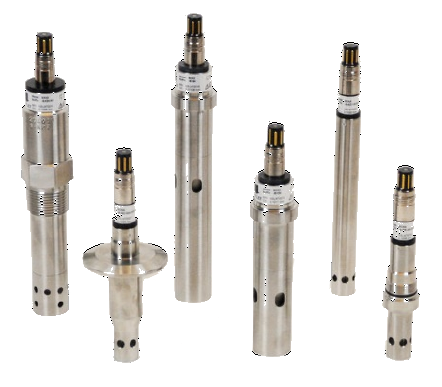Introduction
To defray energy costs, many industrial plants have their own boilers to generate steam in order to produce a portion of their energy needs. In addition to generating power, the steam may also be used directly in plant processes or indirectly via heat exchangers or steam jacketed vessels.
Problems
The raw water used to feed the boilers contains varying levels of impurities that must be removed to protect the boiler and associated equipment. Pre-treatment processes such as reverse osmosis, ion exchange, filtration, softening, and demineralization may be used to reduce the level of impurities, but even the best pretreatment processes will not remove them all and will continuously carry some dissolved mineral impurities into the boiler.
These dissolved impurities accumulate in the boiler water when steam is made; only pure water leaves the boiler. The increasing concentration of dissolved solids leads to carryover of boiler water into the steam, damaging piping, steam traps, and other process equipment. The concentration of dissolved solids increases until the boiler water can no longer hold all of them in solution and a saturation point is reached. They then begin to drop out becoming suspended solids and forming a sludge or scale on the boiler walls and piping.
Boiler problems are avoided by periodically discharging or “blowing down” water from the boiler to reduce the concentrations of suspended and total dissolved solids. Surface water blowdown is often done continuously to reduce the level of dissolved solids, and bottom blowdown is performed periodically to remove sludge or suspended solids from the bottom of the boiler. The frequency and level of blowdown required each day depends upon the concentration of impurities and the rate at which they build up in the boiler water.
Boilers operating on soft water will require more top or skimmer blowdown to remove dissolved solids, whereas boilers operating on hard water will require more bottom blowdown to remove the settled solids. While control of suspended and dissolved solids in the boiler is critical, care must be taken to avoid excessive blowdown, as this would increase the demand for make-up (feed) water, treatment chemicals, and fuel.
Benefits/Solutions
The benefits for proper boiler blowdown control include the following:
- Reduced operating costs (less feedwaterconsumption, chemical treatment, and higher heating efficiency).
- Reduced maintenance and repair costs (minimized carryover and deposits).
- Cleaner and more efficient steam.
- Minimized energy loss from boiler blowdown can save about 2% of a facility’s total energy use with an average simple payback of less than one year.
The most common methodologies used for boiler blowdown control include: (1) continuous, (2) manual and (3) automatic.
Continuous blowdown utilizes a calibrated valve and a blowdown tap near the boiler water surface. As the name implies, it continuously takes water from the top of the boiler at a predetermined rate to reduce the level of dissolved solids. The rate is usually set slightly greater than necessary to maintain safety protocols.
Manual blowdown is accomplished at most plants by taking boiler water samples once a shift and adjusting the blowdown accordingly. This grab sample approach means that operators cannot immediately respond to changes in feedwater conditions or variations in steam demand and scaling conditions can occur and go undetected until the next sample check.
Automatic blowdown control is achieved by constantly monitoring the conductivity value of the boiler water, adjusting the blowdown rate, and the duration based on a specific conductivity set point. This provides control of the water chemistry.
Manual blowdown control cannot maintain this level of control more than 20% of the time. Upgrading from manual blowdown control to automatic control can reduce a boiler’s energy use by 2 – 5 percent and blowdown water losses by up to 20 percent.
Feed water usually contains one limiting component such as chloride, sulfate, carbonate, or silica. Even if the component is not conductive, as is the case with silica, its concentration is usually proportional to a component that can be measured by conductivity. Therefore, conductivity is a viable measurement for monitoring the overall total dissolved solids present in the boiler. A rise in conductivity indicates a rise in the “contamination” of the boiler water.
Summary
The frequency and duration required for boiler blowdown is significantly affected by the water quality. Improving feedwater quality through makeup water, chemical treatment and proper blowdown control can significantly reduce treatment and operational costs including:
- Reduced operating costs
- Reduced maintenance and repair costs
- Cleaner and more efficient steam
- Energy savings
Increased efficiency and reduced operating costs can be achieved by using the Yokogawa Conductivity Series line of products. Control configurations will carry with the application and the customer’s requirements.
Product Recommendations
Conductivity Measurement System:
Process Liquid Analyzer:
2-wire FLXA202 Conductivity Analyzer
4-wire FLXA402 Conductivity Analyzer

Sensor Selection:
Analog and Digital SMART sensors are available. Analog options allow users to interface with a system that has been used historically. SENCOM™ technology, which allows sensors to transmit and receive data when connected to a transmitter/analyzer or a PC. The SMART digital sensors maintain specific measurement and calibration data on an integrated chip along that is an integral part of the sensor providing easy plug and play solutions. The data management software optimizes the performance of sensors for enhanced reliability and process safety.
Option #1:
SC42-S*34 Large-Bore Conductivity Sensor
(fittings available for Flow-Thru, Insertion, or Immersion installations)
Option #2:
SC4A Conductivity Sensor
(fittings available for Insertion, Sanitary, or Retractable installations.)

Another alternative would be Toroidal or Inductive Conductivity Sensor:
ISC40 Inductive Conductivity Sensor (fittings available for Flow-thru, Insertion, or Immersion installations)

업종
-
식음료
Yokogawa는 오늘날의 식음료 기업들이 기후 변화, 소비자 수요 및 글로벌 경쟁력 향상이라는 전례 없는 도전에 직면해 있다는 것을 알고 있습니다. 이러한 도전을 극복하기 위해서는 생산, 자산 관리, 식품 안전 및 품질이라는 핵심 분야에 초점을 맞춘 혁신적인 솔루션이 필요합니다.
-
오일 및 가스
Yokogawa는 해상 및 육상 시설에서 파이프라인, 터미널 및 심해 운전에 이르기까지 석유 및 가스 사업의 모든 부분에서 풍부한 경험을 보유하고 있습니다. 우리는 안전을 강화하고 정확하고 신뢰성 있는 운전을 보장하며 플랜트 효율을 높이는 솔루션을 제공합니다.
-
오일 및 가스관련 다운스트림
석유 및 가스 산업은 최근 몇 년간 어려움이 커지고 있습니다. 여기에는 처리할 원료의 변화하는 특성, 공정 설비 및 장비의 고령화, 에너지 비용의 상승, 정유 공장을 안전하고 효율적으로 운영할 수 있는 숙련 된 플랜트 운영자의 부족, 그리고 시장과 시장의 끊임없이 변화하는 요구 사항이 포함됩니다.
지난 수년간 Yokogawa와는 많은 어려움을 겪고 있는 산업 솔루션을 제공하기 위해 여러 다운스트림 회사와 파트너 관계를 맺어 왔습니다. Yokogawa의 VigilantPlant 솔루션은 플랜트 소유자가 플랜트 내에서 최대한의 수익성과 지속 가능한 안전을 달성하도록 도왔습니다.
-
전력
1970년대 중반, Yokogawa는 EBS 전기 제어 시스템 (EBS Electric Control System)의 출시와 함께 전력 사업에 진출했습니다. 그 이후로 Yokogawa는 전 세계 고객에게 최상의 서비스와 솔루션을 제공하기 위한 기술과 역량의 개발을 꾸준히 지속해 왔습니다.
Yokogawa는 역동적인 글로벌 전력 시장에서 더욱 적극적인 역할을 수행하기 위해 글로벌 전력 솔루션 네트워크를 운영했습니다. 이로 인해 Yokogawa 내에서 보다 긴밀한 팀워크가 가능해져서 글로벌 리소스와 업계 노하우를 하나로 모았습니다. Yokogawa의 전력 산업 전문가들은 각 고객에게 정교한 요구 사항에 가장 적합한 솔루션을 제공하기 위해 협력합니다.
-
제지 및 펄프
제지 및 펄프 산업에서는 경쟁이 심하고 끊임없이 변화하는 시장 요구를 충족시켜야 합니다. Yokogawa는 이러한 시장 환경에서 전 세계적으로 지속 가능한 에너지 효율적 플랜트를 실현하는 데 도움을 줍니다.
-
화학
화학 플랜트는 연속 및 Batch 생산 공정에 의존하며, 각각은 제어 시스템에 대한 다양한 요구 사항을 제시합니다. 연속 공정은 실패하지 않고 생산 라인을 중단시키는 견고하고 안정적인 제어 시스템을 필요로하는 반면, Batch 공정의 중요성은 수식, 절차 및 공정을 조정하는 데 있어 큰 유연성을 허용하는 제어 시스템을 갖추는 데 있습니다. 두 종류의 시스템 모두 제품의 사용 가능한 품질 내역에서 관리되어야 하며 비일상적인 작업을 수행할 수 있어야 합니다. Yokogawa는 광범위한 제품 포트폴리오, 숙련된 시스템 엔지니어 및 글로벌 영업 및 서비스 네트워크를 통해 모든 공장 공정에 대한 솔루션을 제공합니다.
Related Products & Solutions
-
2-Wire Transmitter/Analyzer FLXA202
The FLEXA™ series analyzers are used for continuous on-line measurements in industrial installations. With an option for single or dual sensor measurement, they are the most flexible two-wire analyzer available.
-
2-Wire Transmitter/Analyzer FLXA202/21
FLEXA ™ 시리즈 분석기는 산업용 설비의 연속 온라인 측정에 사용됩니다. 단일 또는 이중 센서 측정 옵션이 있어 가장 유연한 2 선식 분석기입니다.
-
Contacting Conductivity Sensors SC42/SC4A(J)
수용액서의 전도도 측정은 물에서 불순물을 측정하는데 점점 더 중요해지고 있습니다. Yokogawa는 극한 조건에서도 이러한 측정에 대응할 수 있는 정밀 센서와 계측기를 설계하고 있습니다.
-
Digital SMART SENCOM™ Adapter, SA11
Reusable SMART adapter, requiring only the analog sensor to be disposed of when it reaches the end of its lifetime. With the SENCOM 4.0 platform, Yokogawa delivers reduced costs and waste while contributing to its long-term business goals of a sustainable future for all.
-
Inductive (Torodial, Electrodeless) Conductivity Analyzer
유도식 전도도 방법은 특히 높은 전도도 측정에 적합합니다. 분석계는 2개의 Troidal 변압기가 내장된 센서와 함께 작동합니다. AC 전류는 공정 샘플에 전압을 유도하여 샘플에 전류를 발생 시킵니다. 이 전류의 세기는 옴의 범칙에 따른 샘플의 전도도에 비례합니다.
-
Inductive (Torodial, Electrodeless) Conductivity Sensor ISC40
ISC40 센서는 EXA ISC 분석계와 함께 사용하도록 설계되어 있습니다. 이 조합은 신뢰성, 정확성, 범위성, 가격 성능 측면에서 전도도 측정에 대한 모든 기대를 초과합니다.
-
Pure Water (Low) Conductivity sensors SC4A(J)/SC42
반도체, 전력, 물 및 제약 산업에서 발견되는 낮은 전도도 어플리케이션을 위해 만들어진 센서는 편리한 소형 스타일입니다.
-
Pure Water (low) Conductivity/Resitivity Analyzers
반도체, 전력, 수자원 및 제약 산업에서 발견되는 낮은 전도도 응용 분야를 대상으로합니다. 이 분석기는 전도도 센서에 접촉하여 작동합니다.
-
Universal Contacting Conductivity Analyzers
접촉식 전도도 방법은 특히 낮은 전도도 및 매우 순수한 전도도 측정에 적합합니다. 이 분석기는 온도 요소가 내장 된 접촉 전도도 센서와 함께 작동합니다.
-
Conductivity Analyzers
전도도 계, 분석기 및 송신기는 전도도, 저항률, WIFI, 탈 염기 수, RO 수, 농도 퍼센트, 보일러 블로우 다운 및 TDS의 연속 공정 측정 및 모니터링에 사용됩니다.
-
Conductivity Sensors
전도도 센서와 전극은 공정 전도도, 저항률, WIFI, 탈염 수, RO 수, 농도 퍼센트, 보일러 블로우 다운 및 TDS를 측정하는 데 사용됩니다. Retractable, Flow-though, 침적 및 직접 삽입을 포함한 다양한 설치 옵션이 있습니다.
적절한 전극 / 센서 선택은 최적의 측정 결과를 위해 중요합니다.
-
SENCOM™ SMART Digital Sensors
디지털 또는 SMART 센서는 센서의 통합 부분 인 통합 칩에 특정 측정 및 교정 데이터를 유지합니다. 이 데이터는 SPS24와 같은 데이터 관리 소프트웨어를 사용하여 센서와 프로세스 트랜스미터 또는 실험실 PC간에 교환 할 수 있습니다.